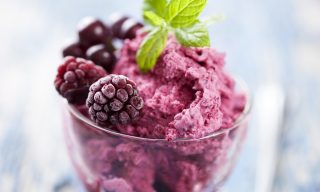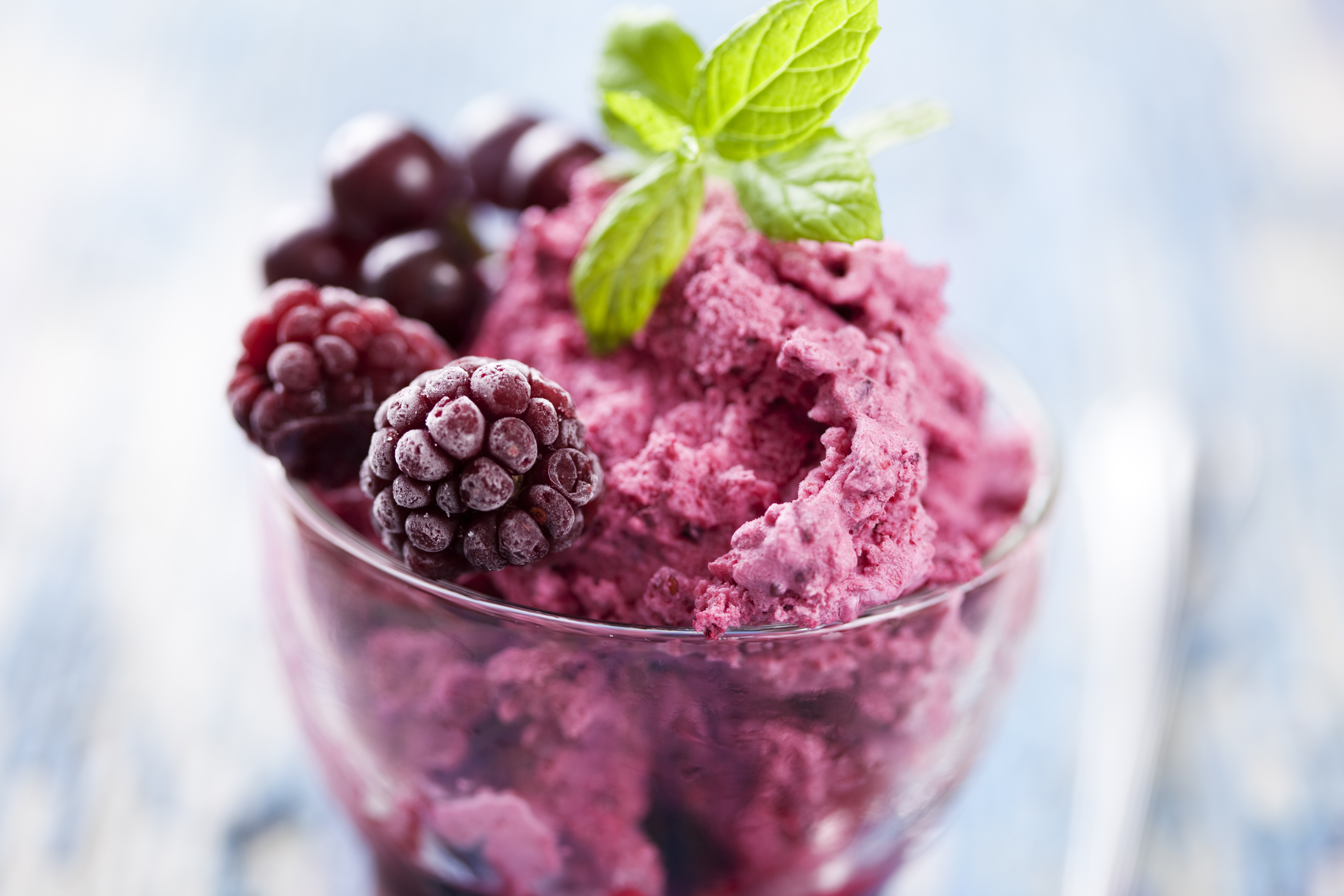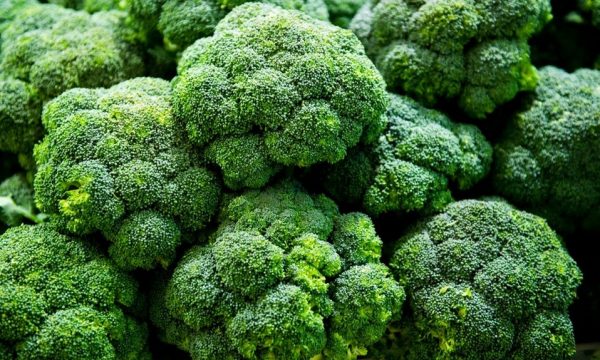During the scorching days of summer, it’s hard to think of any food that is more tempting and refreshing than fresh fruit. Not only are most fruits low in calories but high in essential nutrients, which makes them perfect for anyone trying to lose weight, but summer is the time of year when many fruits are at their peak ripeness and flavor.
So, ideally, all of the fruit you bring home from the market this summer will look perfect and taste great. But, in reality, that is wishful thinking. As careful as you may be to pick only the best of the bunch, sometimes you do wind up with at least one bad apple (or rotten peach, pear, or other fruit). Or, because the fruit looks so delicious or it’s on sale, you go overboard and buy too much, only to have the uneaten fruit go bad before you have a chance to enjoy it.
Looks can sometimes be deceiving when it comes to fruit. Therefore, the huge disappointment on discovering that the fruit you were greatly looking forward to eating is, in fact, overripe is something to which we can all relate. Regardless of the reason; whether you should never have bought it in the first place or you didn’t eat it soon enough, you look at the fruit in dismay and hate the dilemma facing you. Should you throw the no longer fresh fruit out or eat it anyway? It doesn’t have mold but it’s not the most picturesque piece of fruit…You’ve found yourself in a sticky situation.
 Buying fruit that is already overripe is much more likely to happen at a supermarket, where the fruit might have been in storage or in transit for days or weeks before even reaching the store, than at a farmers market. At farmers markets, most fruits are sold the same day they were picked, so you get to purchase them at the optimum time. However, shopping there can cause a different kind of problem. First, you may go to a farmers market a lot less often than you go to the supermarket. So you are tempted to overbuy, figuring that way you will have plenty of fruit on hand to last until your next trip. Secondly, the fruit is so pretty and colorful, you may find it almost impossible to resist, but you forget that it won’t stay that way indefinitely.
Buying fruit that is already overripe is much more likely to happen at a supermarket, where the fruit might have been in storage or in transit for days or weeks before even reaching the store, than at a farmers market. At farmers markets, most fruits are sold the same day they were picked, so you get to purchase them at the optimum time. However, shopping there can cause a different kind of problem. First, you may go to a farmers market a lot less often than you go to the supermarket. So you are tempted to overbuy, figuring that way you will have plenty of fruit on hand to last until your next trip. Secondly, the fruit is so pretty and colorful, you may find it almost impossible to resist, but you forget that it won’t stay that way indefinitely.
The recommendations for different kinds of fruits in the article “How to Tell When Fresh Fruits Are Ripe” in this week’s newsletter should help minimize the above problems, but they won’t eliminate them entirely. So what you do with your overripe fruit? On the one hand, it would be a shame and a big waste of money to throw the fruit out, but you don’t want to eat it either if it tastes bad and might make you sick. Happily, there is a viable third alternative–salvage the fruit so it can still be eaten.
Here are some suggestions. Be sure to check the Nutrition Factors website, too. We have recipes in every category below.
A Dozen Incredibly Easy Ways to Make Overripe Fruit Enjoyably Edible
- Make Bread or Muffins- Recipes for banana bread actually tell you to use bananas that are overripe. But bananas aren’t the only overripe fruit that can be mashed and incorporated into a quick bread or muffin recipe. Peaches, nectarines, and strawberries are also great because while baking, they turn into little pockets of jam. Steven Satterfield, executive chef at the Miller Union in Atlanta and author of Root to Leaf: a Southern Chef Cooks Through the Season (2015), suggests grilling the fruit first to intensify the flavor.
 Make Jam or Jelly- Speaking of jam, you can make your own using overripe peaches and berries. All you have to do is cook the fruit along with a little sugar (optional), aromatics, and a small amount of liquid on your stovetop. Skim off any seeds and other debris that rises to the top. Also avoid caramelizing the fruit, which could make the end product too sweet. Try our recipe for Savory Wild Blueberry-Sage Jam on the Nutrition Factors website.
Make Jam or Jelly- Speaking of jam, you can make your own using overripe peaches and berries. All you have to do is cook the fruit along with a little sugar (optional), aromatics, and a small amount of liquid on your stovetop. Skim off any seeds and other debris that rises to the top. Also avoid caramelizing the fruit, which could make the end product too sweet. Try our recipe for Savory Wild Blueberry-Sage Jam on the Nutrition Factors website.- Use Overripe Fruit in a Filling for a Cobbler or Crumble.
- Make a Smoothie- Since you can blend the fruit with other ingredients, smoothies are the perfect way to disguise a fruit’s appearance that is less than perfect. Actually, the overripeness of the fruit will make a smoothie taste sweeter without having to add extra sugar, which is probably exactly what you want to keep the calories and carbs down.
 By the way in smoothie recipes calling for frozen fruit, fresh fruit can be substituted. Simply add a few ice cubes to the blender in order to chill the drink and get the same frothy texture. Smoothies are an excellent choice for dieters because they are very filling and trick the body into thinking it is getting more food than it really is.
By the way in smoothie recipes calling for frozen fruit, fresh fruit can be substituted. Simply add a few ice cubes to the blender in order to chill the drink and get the same frothy texture. Smoothies are an excellent choice for dieters because they are very filling and trick the body into thinking it is getting more food than it really is. - Make a Scrumptious Topping for Pancakes or Sundaes-Turn your overripe fruit into a warm, chunky syrup for pancakes, frozen yogurt, or low-fat ice cream in almost no time. Or, if you prefer, mix the fruit into pancake batter for fruit-filled pancakes.
- Add to a Recipe for a Sauce or Glaze for Meat or Poultry-Chop the fruit into small pieces or place in a blender before adding to the beef or chicken base stock of your choosing.
 Make a Salad Dressing- If your fruit doesn’t look good enough to include in a salad as is, don’t despair. Improvise! Mix the fruit in a blender together with olive oil, vinegar, herbs, and seasonings to make a tasty, diet-friendly dressing for your summer greens. Add nuts and cheese for both protein and texture contrast.
Make a Salad Dressing- If your fruit doesn’t look good enough to include in a salad as is, don’t despair. Improvise! Mix the fruit in a blender together with olive oil, vinegar, herbs, and seasonings to make a tasty, diet-friendly dressing for your summer greens. Add nuts and cheese for both protein and texture contrast.- Make a Juice- If you have a juicer, just throw the fruits in and let the machine do its job. Otherwise, you can use your blender or food processor. Then strain the juice to drink separately. The fruit remnants can be added to a yogurt parfait.
- Make Fruit Leather- Mash up the fruit, then spread it in a thin layer on a dehydrator rack. Either bake it at a low temperature or place in a dehydrator until the consistency of leather.
 Make Popsicles- Popsicles are the perfect treat for a summer picnic or an afternoon snack on the porch or by the pool. But instead of buying them at the store, you can make your own from overripe fruit. If you wish, you can juice the fruit and strain off the solid part first, or skip the juicing if you prefer a popsicle that’s a little chunky.
Make Popsicles- Popsicles are the perfect treat for a summer picnic or an afternoon snack on the porch or by the pool. But instead of buying them at the store, you can make your own from overripe fruit. If you wish, you can juice the fruit and strain off the solid part first, or skip the juicing if you prefer a popsicle that’s a little chunky.- Make a Granita- If you like snow cones, you will enjoy making a similar frozen treat yourself called granita. After peeling and deseeding the fruit, if applicable, Satterfield (2015) recommends juicing the fruit, then stirring in a little alcohol to prevent it from freezing completely, and then placing the mixture into a shallow and wide container and placing same in the freezer. During the freezing process, break up the icy parts periodically. You will wind up with a frozen fruity dessert that looks like shaved ice.
 Freeze the Fruit for Later-When in doubt about what to do with your overripe fruit, instead of throwing it out, throw it in your freezer for later use. Just remember, if the fruit has a stone or pit, to remove it first and if the fruit has a peel, to remove that as well. In addition, to avoid clumping during the freezing process, Satterfield (2015) recommends chopping the fruit first and placing the cut up fruit in a single layer in a freezing pan. Once the fruit is completely frozen (after about four hours), it can be transferred to plastic freezer bags for longer storage. The fruit that you have frozen in this manner can be used just like store bought frozen fruit in recipes for baked goods and smoothies.
Freeze the Fruit for Later-When in doubt about what to do with your overripe fruit, instead of throwing it out, throw it in your freezer for later use. Just remember, if the fruit has a stone or pit, to remove it first and if the fruit has a peel, to remove that as well. In addition, to avoid clumping during the freezing process, Satterfield (2015) recommends chopping the fruit first and placing the cut up fruit in a single layer in a freezing pan. Once the fruit is completely frozen (after about four hours), it can be transferred to plastic freezer bags for longer storage. The fruit that you have frozen in this manner can be used just like store bought frozen fruit in recipes for baked goods and smoothies.
References:
Davis, E. (2017, June 22). Mushy bananas, mealy peaches: How to use up fruit past its prime. TODAY.com. Retrieved from http://www.today.com/food/mushy-bananas-mealy-peaches-how-use-fruit-past-its-prime-t31151
Passarella, E. (2013, July 31). Top 10 ways to use up overripe fruit. Retrieved from http://www.thekitchn.com/how-to-use-up-overripe-fruit-58183
Satterfield, S. (2015). Root to leaf.: A southern chef cooks through the seasons. HarperCollins.




